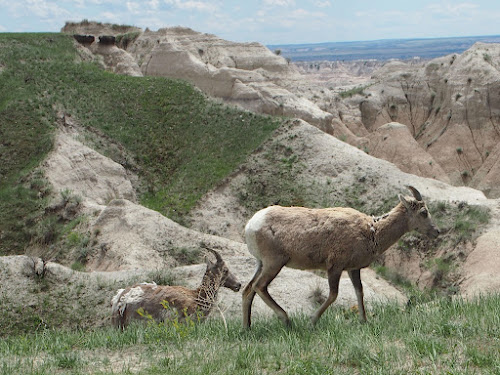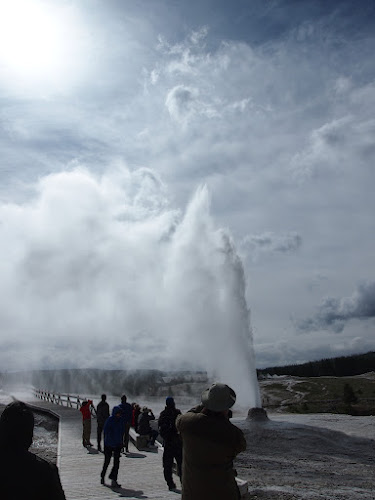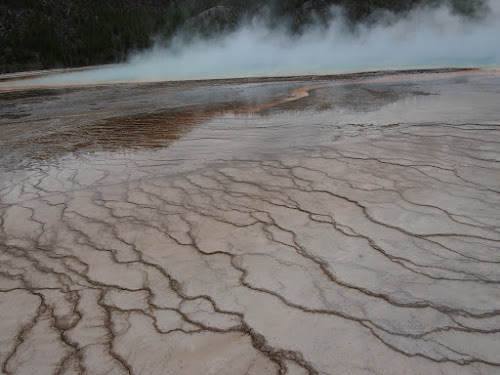With rain & hail and a wind strong enough to push you over the day before, a light snow sends us on our way (if only the bison would allow it). The Old Faithful Inn was a splurge well worth it, the inspiration for “parkitecture” and Disney’s Wilderness Lodge felt like an organic part of the park – a built expression of nature. We’re also glad to have stayed in two regions of the park. After all, it’s as large as the state of Connecticut.



On our way to the Billings airport to pick up our fourth traveler, we stopped by Pictograph Cave State Park. Our party complete, it was off through the Crow Reservation to visit the home of Chief Plenty-Coups, the most important chief of the Crow Tribe in modern history. Known earlier in his career as Bull Goes into the Wind, Chief Plenty-Coups began to make his reputation as a very successful warrior fighting the Sioux and other enemies of the Crow people. Later, the Crow fought alongside the US Army. He was a transitional leader taking his people from the age of the buffalo through to the reservation era. He was impressed by the importance of Mount Vernon and left his home to the people, both red and white, and his Medicine Spring is still a key spiritual destination for the Crow.























































